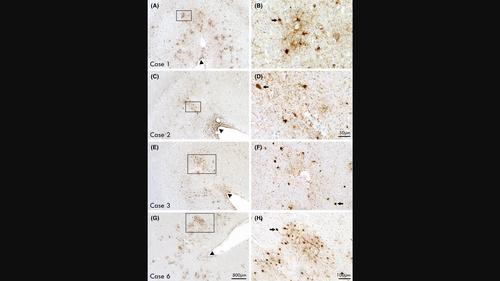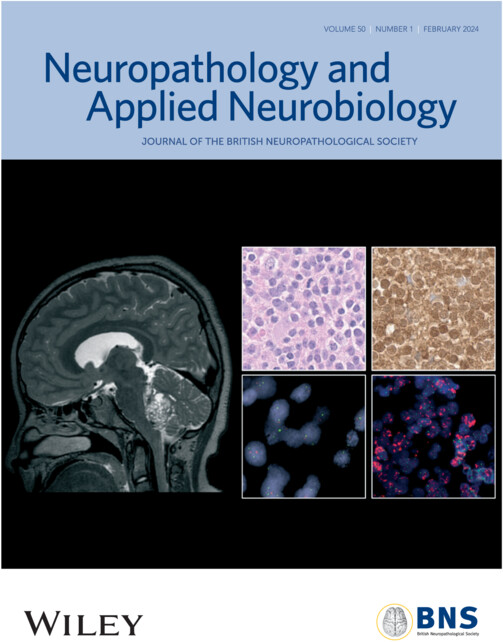Chronic traumatic encephalopathy neuropathologic change in former Australian rugby players
IF 4
2区 医学
Q1 CLINICAL NEUROLOGY
引用次数: 0
Abstract
AimsWe applied the 2021 consensus criteria for both chronic traumatic encephalopathy neuropathological change and traumatic encephalopathy syndrome in a small case series of six former elite‐level Australian rugby code players.MethodsNeuropathological assessment of these cases was carried out at the Sydney and Victorian Brain Banks. Clinical data were collected via clinical interviews and health questionnaires completed by the participants and/or their next of kin, and neuropsychological testing was conducted with participants who were capable of completing this testing.ResultsAll cases exhibited progressive cognitive impairment during life. Chronic traumatic encephalopathy neuropathological change was identified in four out of the six cases. However, coexisting neuropathologies were common, with limbic‐predominant age‐related TDP‐43 encephalopathy and ageing‐related tau astrogliopathy seen in all cases, intermediate or high Alzheimer's disease neuropathological change seen in four cases and hippocampal sclerosis seen in two of the six cases.ConclusionThe presence of multiple neuropathologies in these cases complicates clinical diagnostic efforts for traumatic encephalopathy syndrome. It will be important for further clinicopathological studies on larger groups to report all neuropathological comorbidities found in cases diagnosed with either chronic traumatic encephalopathy neuropathological change and/or traumatic encephalopathy syndrome.

前澳大利亚橄榄球运动员的慢性创伤性脑病神经病理变化
目的我们在一个小型病例系列中应用了 2021 年达成的慢性创伤性脑病神经病理改变和创伤性脑病综合征标准,该病例系列包括六名前澳大利亚精英橄榄球运动员。方法在悉尼和维多利亚脑库对这些病例进行了神经病理评估。临床数据通过临床访谈和由参与者和/或其近亲填写的健康问卷收集,并对有能力完成测试的参与者进行了神经心理学测试。六例病例中有四例发现了慢性创伤性脑病的神经病理变化。然而,并存的神经病理变化也很常见,所有病例中都出现了以边缘为主的与年龄相关的 TDP-43 脑病和与年龄相关的 tau 星形胶质细胞病变,4 例病例出现了中度或高度阿尔茨海默病神经病理变化,6 例病例中有 2 例出现了海马硬化。对更大的群体进行进一步的临床病理学研究,报告在诊断为慢性外伤性脑病神经病理改变和/或外伤性脑病综合征的病例中发现的所有神经病理合并症将是非常重要的。
本文章由计算机程序翻译,如有差异,请以英文原文为准。
求助全文
约1分钟内获得全文
求助全文
来源期刊
CiteScore
8.20
自引率
2.00%
发文量
87
审稿时长
6-12 weeks
期刊介绍:
Neuropathology and Applied Neurobiology is an international journal for the publication of original papers, both clinical and experimental, on problems and pathological processes in neuropathology and muscle disease. Established in 1974, this reputable and well respected journal is an international journal sponsored by the British Neuropathological Society, one of the world leading societies for Neuropathology, pioneering research and scientific endeavour with a global membership base. Additionally members of the British Neuropathological Society get 50% off the cost of print colour on acceptance of their article.

 求助内容:
求助内容: 应助结果提醒方式:
应助结果提醒方式:


